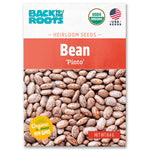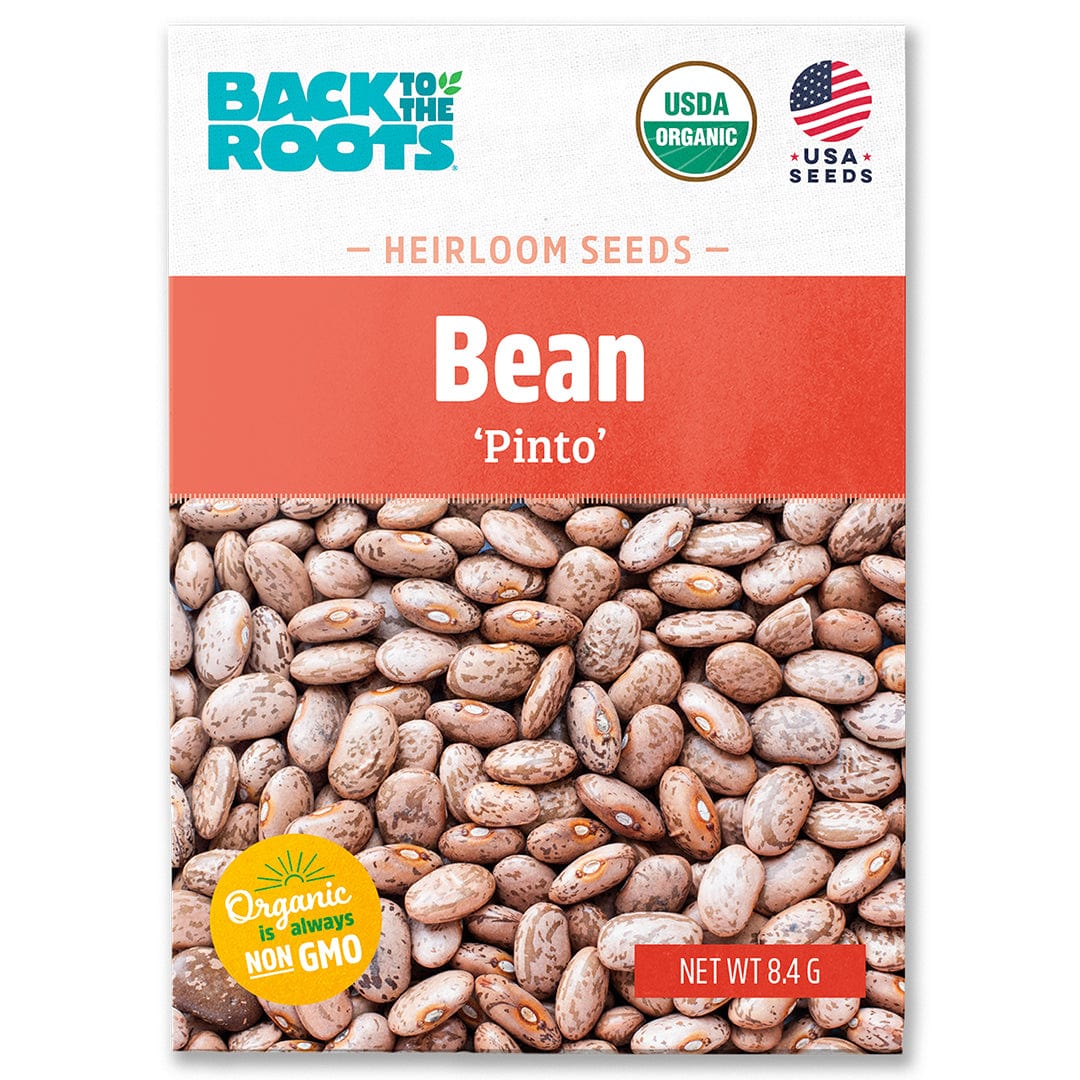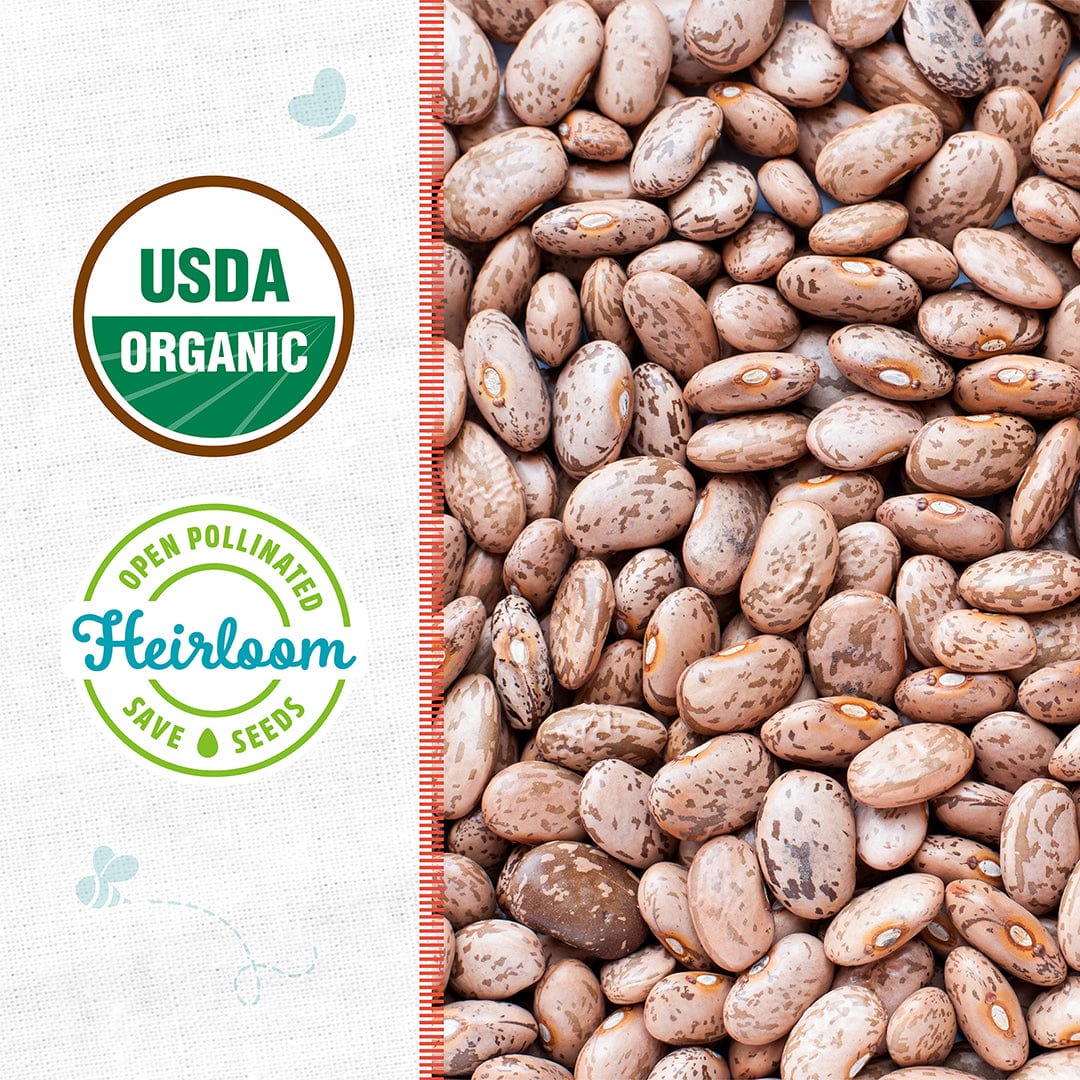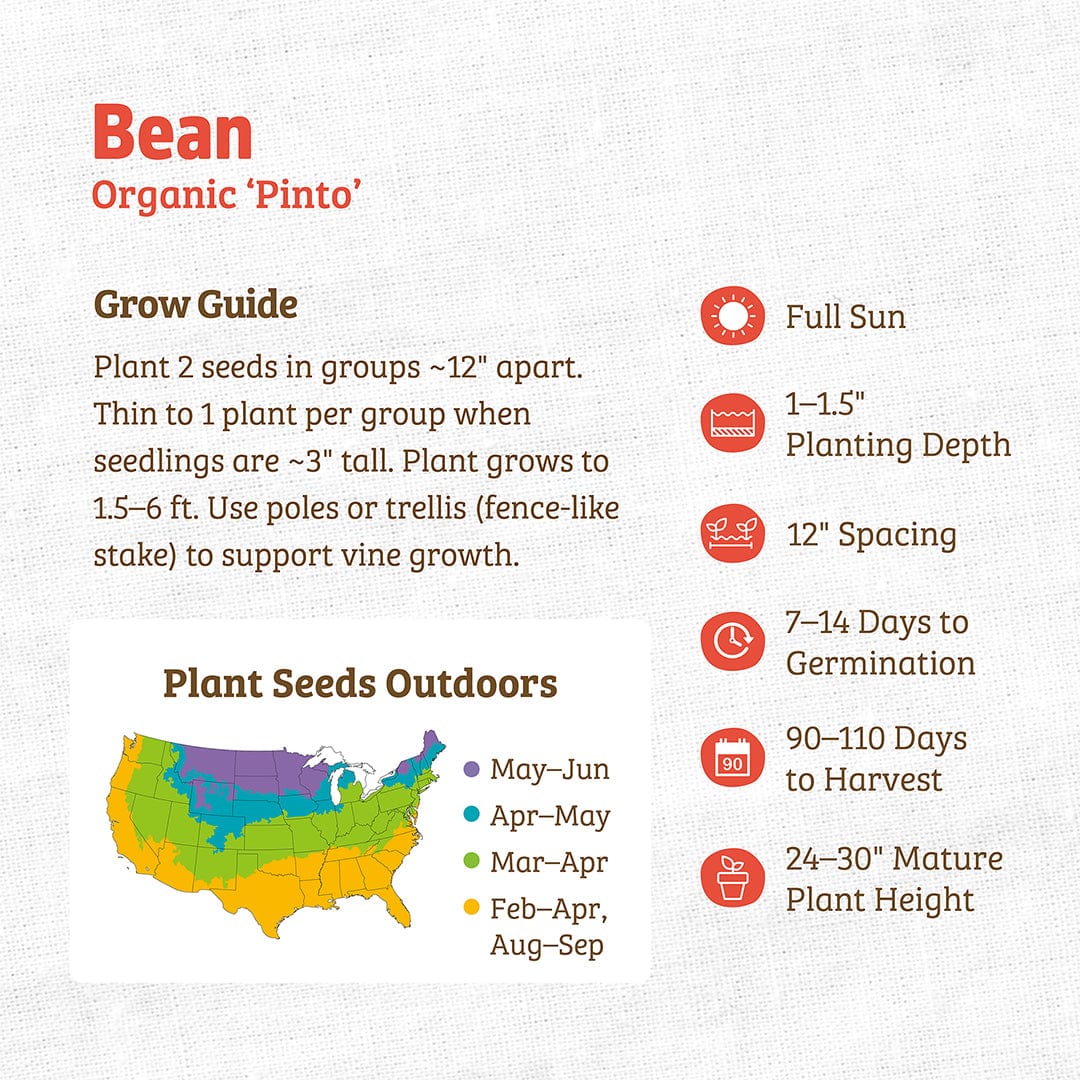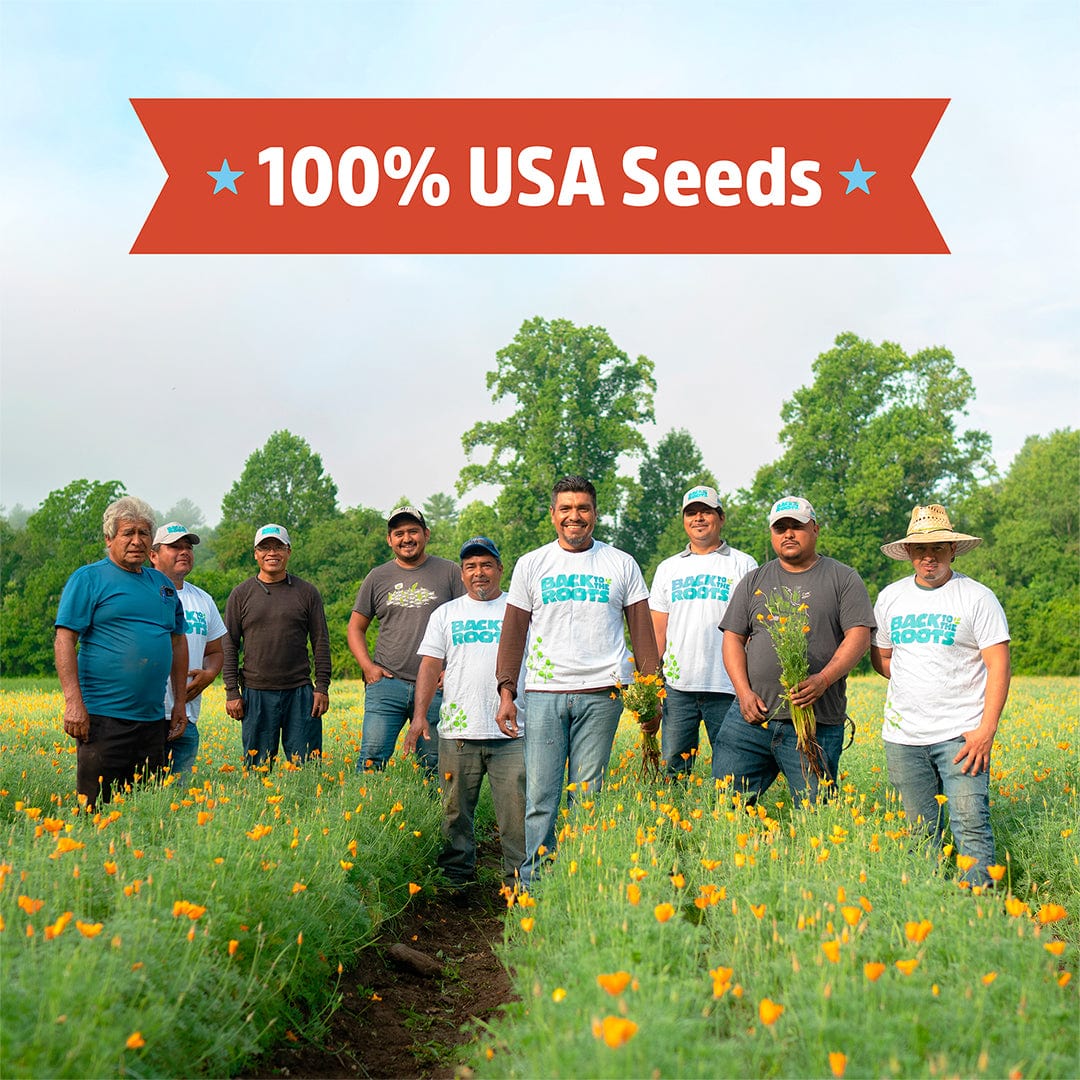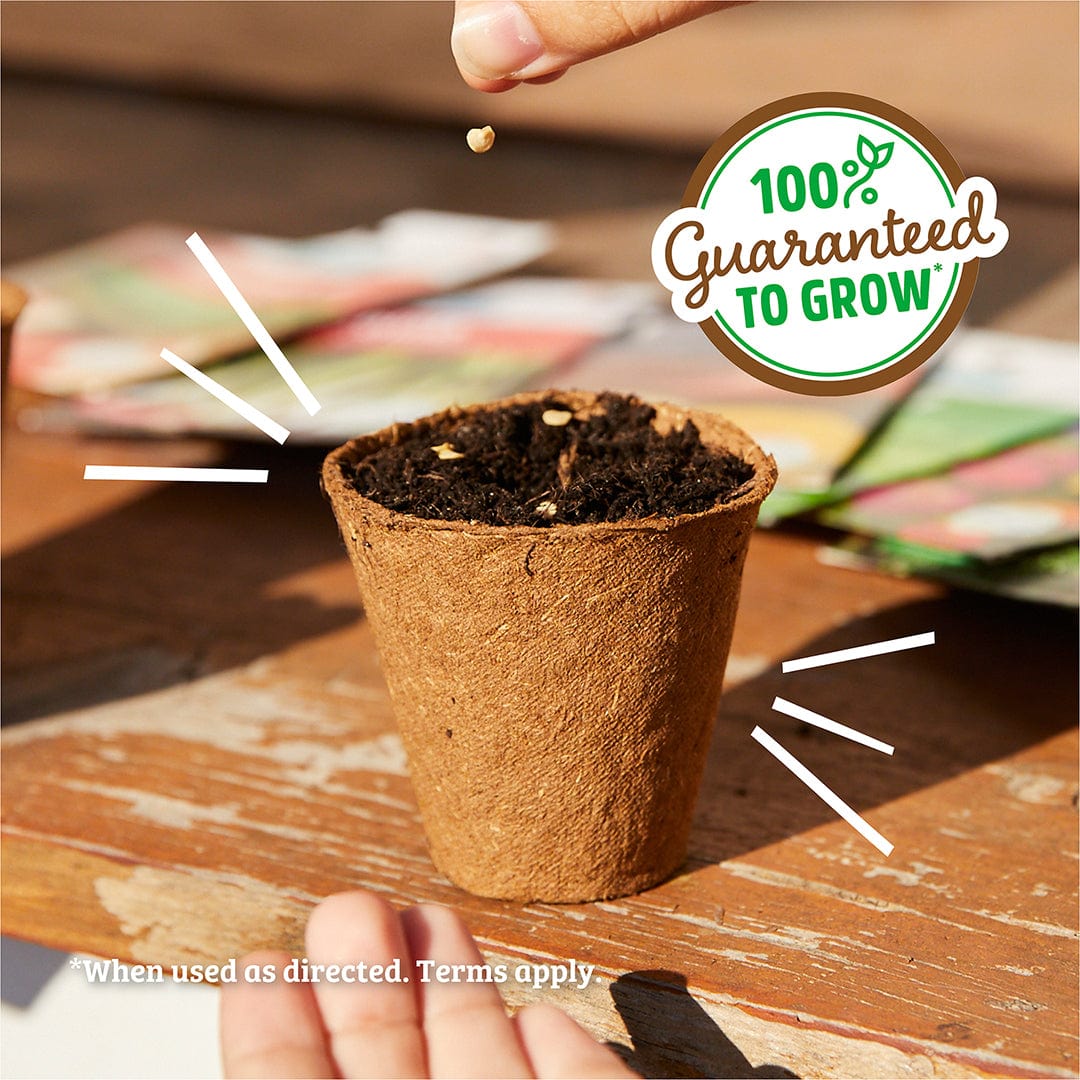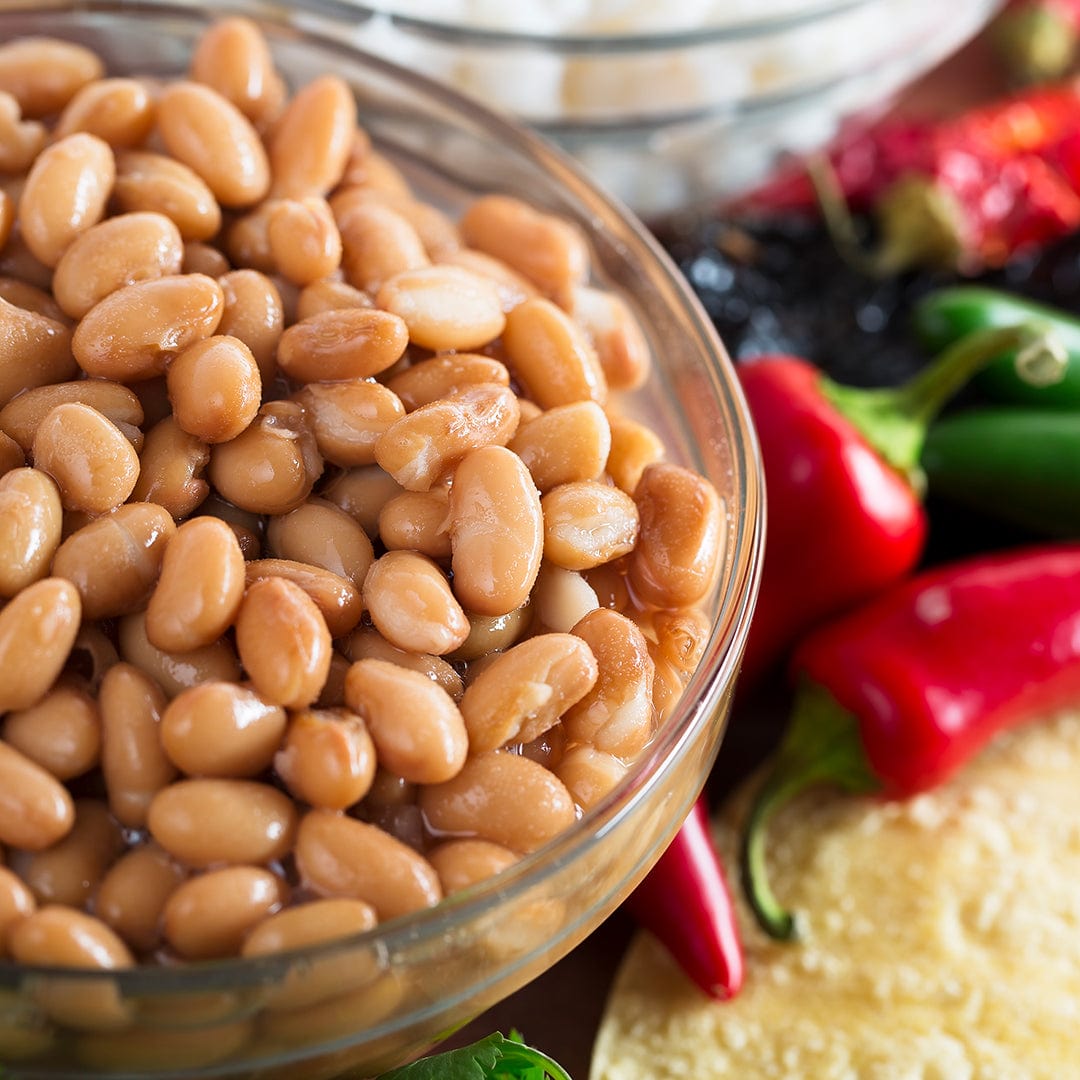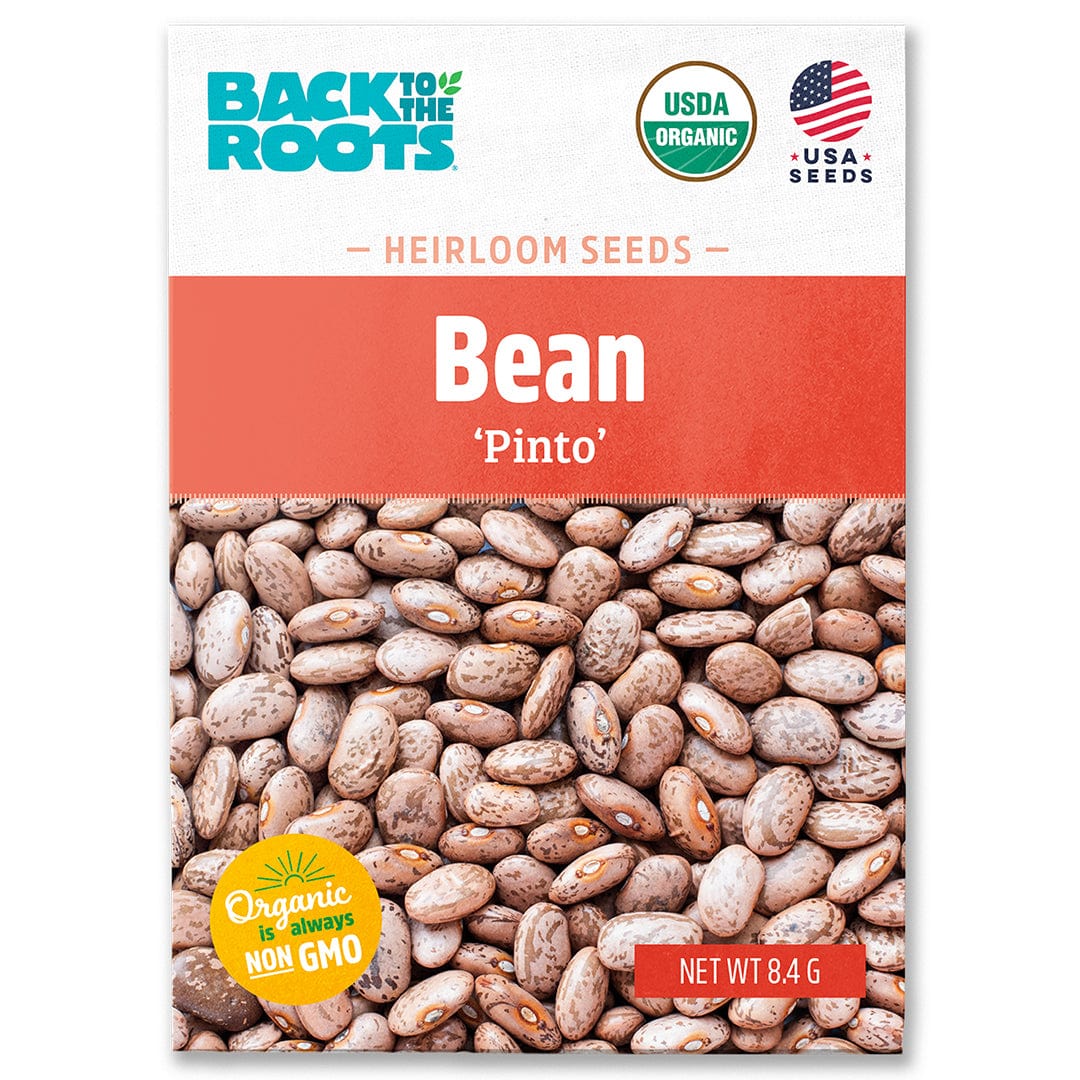
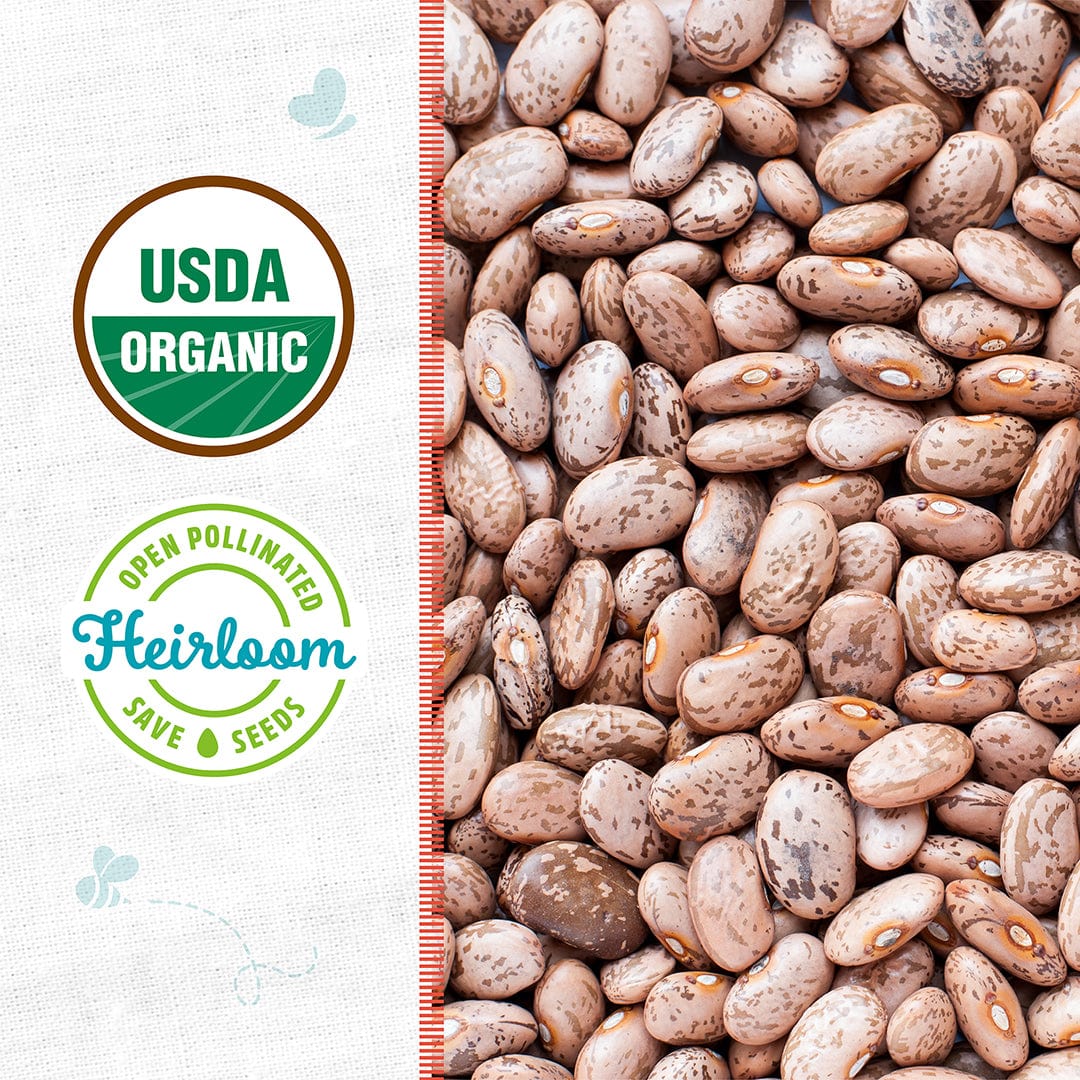
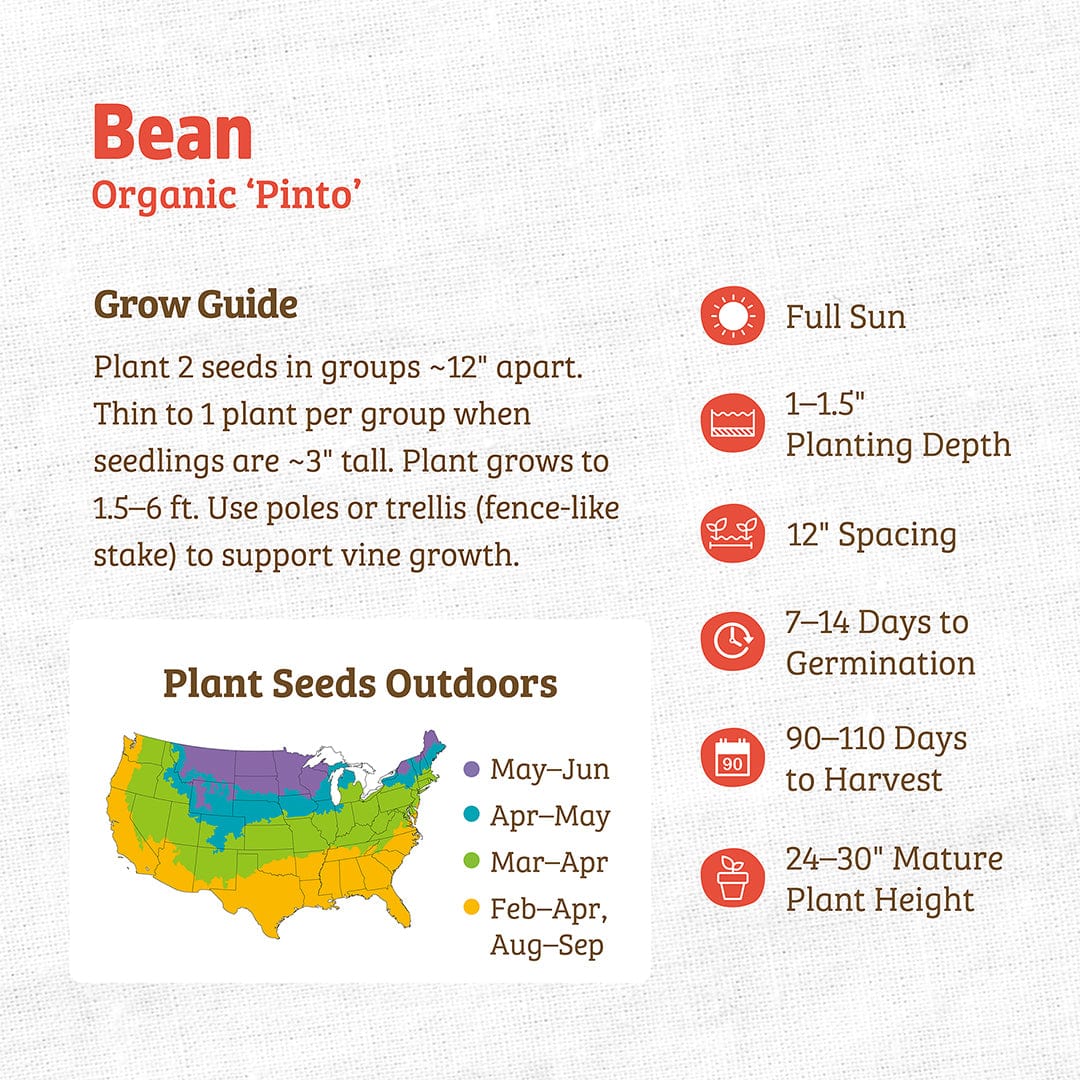
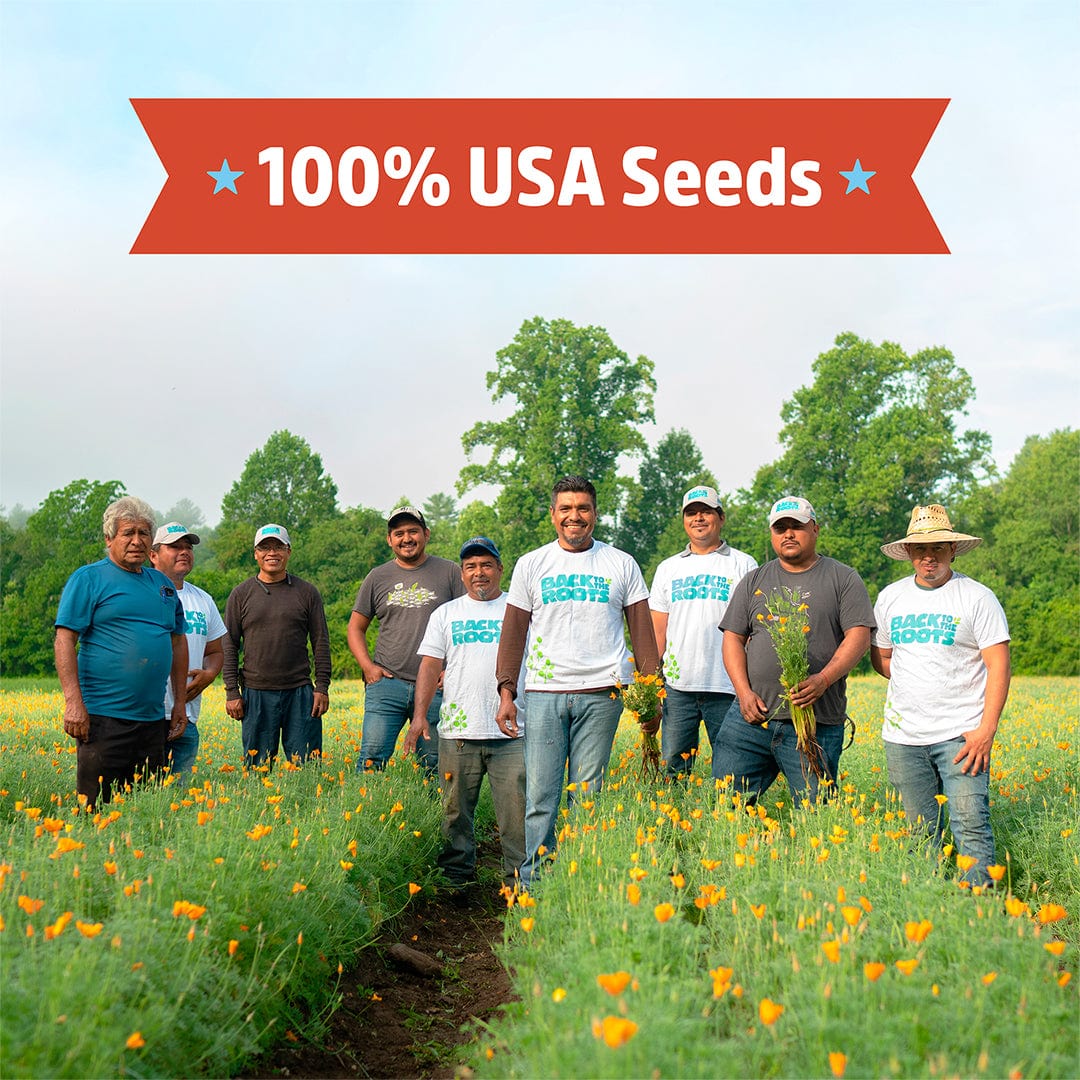
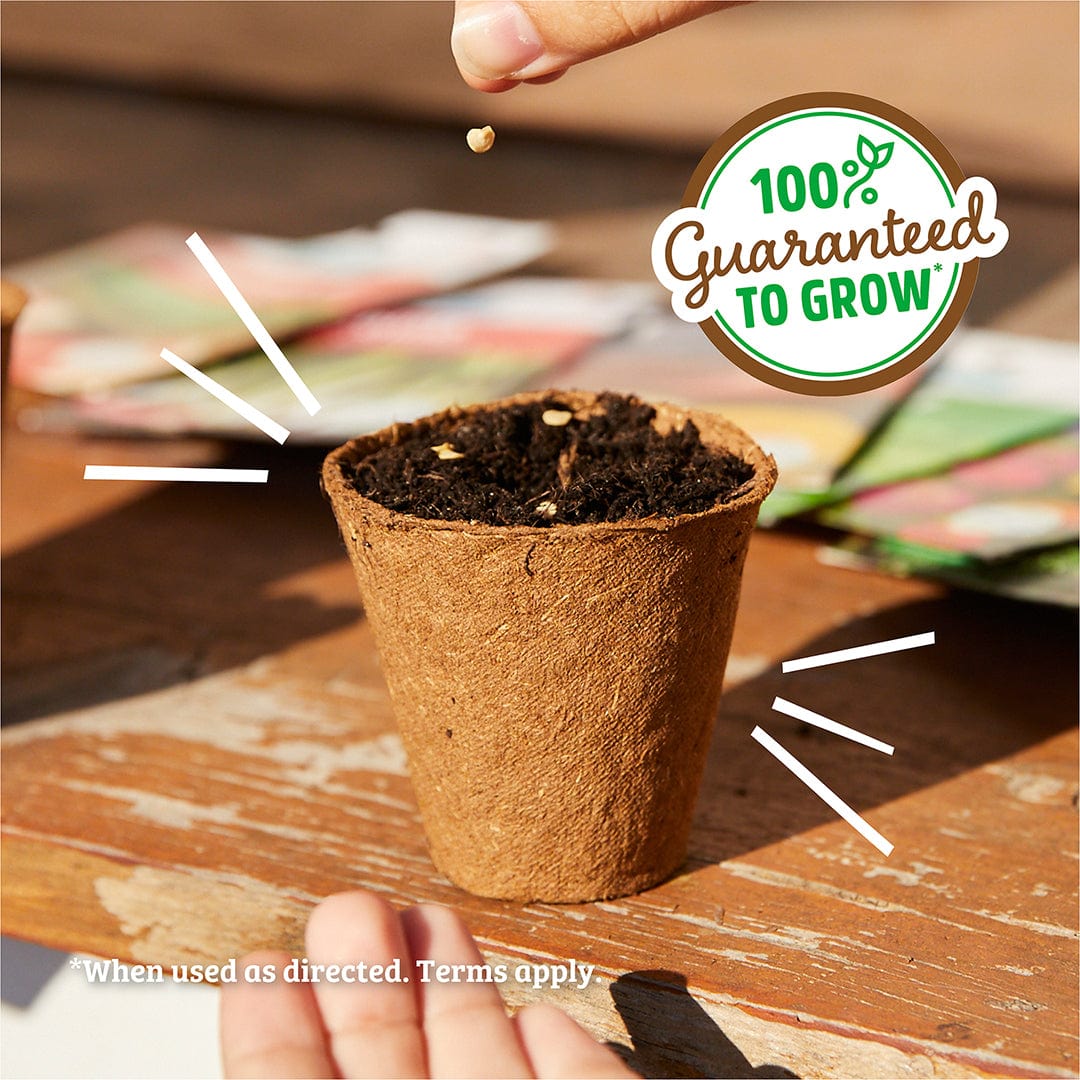
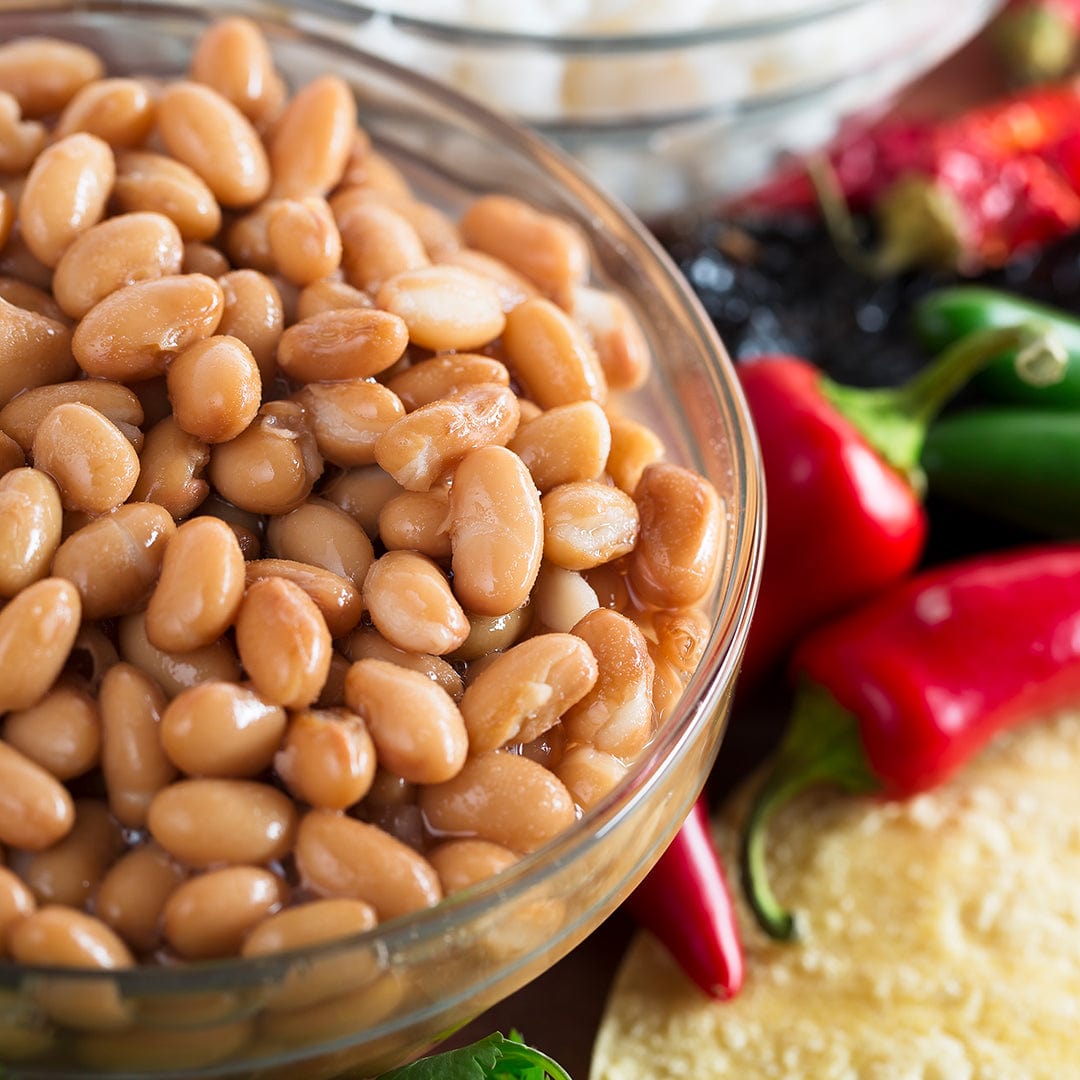
Organic Bean Seeds — 'Pinto'
Overview
Pinto beans are a popular, speckled heirloom variety known for their creamy texture and mild flavor, making them ideal for soups, stews, and refried beans. Beans are a staple food in many cultures and can be enjoyed at the dry, mature stage. Pinto beans are easy to grow, drought-tolerant, and highly productive. They are rich in protein, complex carbohydrates, folate, iron, and soluble fiber. Additionally, their ability to form a symbiotic relationship with Rhizobium bacteria helps improve soil fertility by fixing nitrogen.
Pinto beans typically grow as bush beans, which are low-growing, compact plants reaching 1–2 feet tall and do not need support. Though less common, some pole varieties exist, which require trellising or support structures.
Conditions
Pinto beans are a frost-sensitive, warm-season crop that grows best in well-drained, loamy soil with a pH between 5.8 and 6.5. They thrive in full sun, needing at least 6 hours of direct sunlight each day. For the best results, prepare the soil by amending it with compost, phosphorus, and potassium.
Planting
Plant pinto beans directly in the garden once the soil is warm (above 60°F). Sow the seeds 1 inch deep, spaced 4 to 6 inches apart in rows. Water well when planting, but avoid overwatering to prevent seed rot. After seedlings emerge in 7 to 14 days, keep the soil moderately moist, allowing it to dry slightly between waterings. Bush types don’t need support, but if growing pole varieties, set up trellises shortly after planting.
Care
If pinto beans are new to your garden, inoculating the seeds with Rhizobium bacteria can help the plants fix nitrogen and improve yields. Water consistently but avoid overwatering, allowing the soil to dry slightly between waterings.
Pests and Diseases
To prevent seed rot and damping-off disease, avoid planting in cool, damp soil. White mold can be minimized by rotating crops and watering early in the day so foliage dries quickly. To manage bacterial blights, practice crop rotation and compost old plant debris. Encourage beneficial insects by planting cilantro or other umbel flowers nearby. For severe infestations, use organic solutions such as insecticidal soap or diatomaceous earth, which is safe for humans and effective against a wide range of pests.
Harvest
For dry beans, let the pods dry on the plant until they are brittle and the seeds rattle inside. Harvest frequently if picking beans at the green shell stage to encourage continued production.
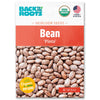
Organic Bean Seeds — 'Pinto'
